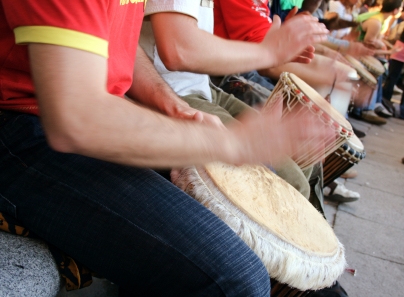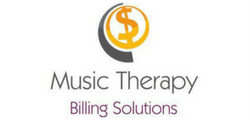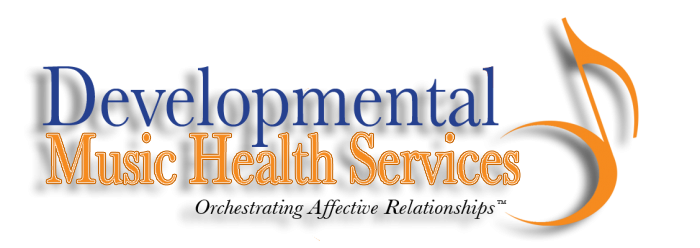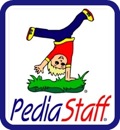See the title? That’s a question that can’t really be answered.
There is no such thing as a “typical” music therapy session. A music therapy session will look vastly different depending on who we work with and where we work with them.
That said, there are certain components that are inherent to a music therapy session. Although these components will loo different depending on client age, clinical population, and setting, as a general rule, you can spot them in almost any music therapy session.
Opening
There is often some formal way a music therapist will open the session. Examples include:
- Singing a “hello song” when working with children
- Starting a group session by going around the circle and inviting everyone to answer a question about how they are doing in that moment (sometimes called a round or a check-in).
- Beginning with a review of what occurred in the previous session
The opening helps transition our clients to the music therapy “space” and helps set the tone for the session. If appropriate, the therapist may use the same opening week after week (e.g. sing the same “Hello Song”). This provides familiarity for the client and, after time, can “prime” them so they know that music therapy starts when that song is sung.
Interventions
The bulk of the session will consist of the music therapy interventions. These are experiences the music therapist facilitates that are meant to target the client’s non-musical goals and objectives. Generally speaking, there are four types of music-based interventions:
- Performing/Playing. This can include singing or instrument playing.
- Composing. This includes any group or individual songwriting process and can be as simple or complex as needed.
- Improvising. Improvisation means creating music on the spot or in the moment.
- Receiving/Listening. This can include a music and relaxation-type of experience, a lyric analysis intervention, and a “moving to music” type of experience (as in gait training).
A “typical” music therapy session may incorporate multiple interventions or just one long, in-depth one. The key is that each intervention is designed to target a specific therapeutic goal and objective.
Closing
The closing is like the opening…a major transition point the gets the client ready to leave the music therapy space and “re-join” the outside world. Similar to the opening, this can include a “good-bye song”, a closing check-in or round, or a summary of what happened during the session.
Transitions
Although the closing and opening are the main transition points, other transitions that happen during a session are key to it’s success. A transition generally occurs in between interventions (or components within an intervention) and are meant to help the client move seamlessly through various points in the session.
A transition can be as simple as a sentence or two. It can include “cleaning up” from the previous intervention (e.g. putting away instruments). Sometimes we transition through a song.
Environment
This may seem like an odd component to add, but the environment or setting the therapist creates in the room can help or hinder the therapeutic process. In some ways, it’s like the silent fourth player in the therapeutic process (the three key players being the therapist, the client, and the music).
Environmental factors that are important to consider include:
- Lighting
- Outside noise/sounds
- Set-up of the chairs (I’m partial to a circle)
- Instrument/Prop storage (needs to be accessible to the therapist and not distracting to the client)
- Smells in the room
- Visual distractions (such as pictures and posters on the wall)
- Tactile distractions (are the instruments within reach?)
I’d like to thank Maven reader Elise Ivey for the inspiration behind this post. Elise was curious about how I plan a “typical” music therapy session. I hope this post helped give you some insight, Elise!
P.S. I am exciting to announce that the Music Therapy Maven is about to turn 2! Woo-hoo!!! Stayed tuned next week for an exciting announcement related to this anniversary. Want to know the announcement sooner? Simply put your name and email in the box below to find out later this week.
As a bonus…you’ll also received a free copy of my Productivity Primer, which includes instant access to 7 tips that will help you do more in less time.



 orcid.org/0000-0001-8665-1493
orcid.org/0000-0001-8665-1493






{ 11 comments… read them below or add one }
Thanks very much for this post, Kimberly.
This certainly addresses a very common question posed by the public when inquiring about the nature of music therapy–particularly around what “actually happens” in sessions.
Just something to add, for additional thought…Although stated above that the ingredients of a music therapy session include the specified elements as a “general rule,” it may only be “general” when considered from the perspective of a certain social context. In fact, the structure of music therapy sessions can vary radically from the more conventional type described here.
Consider for example, certain expressions of Community Music Therapy (CoMT). The linearity of opening-intervention-closing is not always apparent in these instances, and it is not really the music therapist who directs the structure of the “session” (if that term would even apply), per se. In these cases, it is more a matter of the therapist’s skilled, musical presence, situated in an existing social context, with one or more health foci.
I am interested to hear from those whose experiences of music therapy deviate from a conventional “treatment” model scenario (as, for example, I have described in terms of some manifestations of CoMT).
Thanks again for this post.
That is an interesting point Brian!
When I was in undergrad at Georgia College and State University, I was very involved in our Community Music Therapy program that was associated with the Baldwin Service Center which provided daytime care to adults with developmental disabilities. Even in the choir that I worked with and eventually directed, the hello and goodbye song were integral parts. They provided the opportunity to share how the week has been, make sure everyone was oriented, and then to process feelings about the ‘work’ that was accomplished during the rehearsal. The interventions, to me, seemed mainly to consist of us (the students) trouble shooting various ways to teach the clients the music, finding what worked, and then repetition.
I know of course that this is only one example of CoMT, and a very loved one for me, but I thought I’d share from that perspective how, while they may have served different purposes, the core parts of a “music therapy session” as described by Kimberly were still present.
Thanks for that example of applying music therapy in/with a community, Natalie! It sounds like the persons involved certainly got a lot out of it.
I should clarify my intended meaning here–the term, “Community Music Therapy” (often abbreviated CoMT) actually does not, per se, signify doing community work as a music therapist. In fact, as CoMT is described by Pavlicevic and Ansdell (2004) it can very much involve “work” with individuals. The distinguishing feature is not a methodological one, but a paradigmatic one and philosophical one, that comes with a particular orientation (to understanding persons, music, and health). It does, however, drive and shape what practice can “look like.”
I am not saying that you and others associated with the GCSU program were not actually doing CoMT, but it is quite possible to do “conventional” music therapy with a community (large group). There are definitely many examples of music therapy work that does not follow the sequential components of the conventional therapy session, simply because they are not always relevant (or even possible) in many contexts. Read, for example, Pavlicevic’s example of her work in South Africa, in which she essentially used herself and her everyday music therapy sensibilities as the “intervention”…there were almost no examples of “sessions” at all, and yet she was most definitely “doing” music therapy. I think it (and many more like this) is an excellent example of some of the larger potentials we, as music therapists, possess in our capacity to serve the public, beyond the conventionally understood therapy model (which Ansdell calls the “consensus model”).
Thanks again for your example!
Brian
Kimberly,
Thank you for this overview of your ‘typical’ session. Much of your session layout is similar to my sessions at the Center. I enjoyed your section about the environment. It is frustrating to have a staff bathroom in the music therapy/sensory room. Staff often interrupt a relaxation session to come in and use the facilities. This is distracting for both therapist and client.
Back to the typical session… of course, there are days when 4 out of 5 people are unavailable/refuse, and you might have quite a different session with an individual (this happened today). But then, that is what I love about therapy. It’s about meeting the goals of whoever is in front of you in a way that is best for that person. Aren’t we involved in an amazing profession?
Natalie,
I had heard you were a GCSU alum (as am I), but I had no idea you worked with the Baldwin Service Center! They have since gone through a name change, and are now “The Life Enrichment Center”, where I did many practicum hours and now work 5 days a week. What a small world!
@Brain You bring up some valuable points! I absolutely agree that there can be nuances that don’t fit in the “conventional treatment” scenario I described in this point. However, that was beyond the scope of the post…but perhaps an idea for a future article? 😀 I appreciate your feedback! @Natalie I appreciate you sharing your example! @Elise You are absolutely right! I have had many sessions where this “general” outline goes right out the window! More often than not, those are some of the best sessions, too 🙂
Hi Kimberly,
I like the basic structure you outlined here. I agree that this is “typical” for most traditional, structured, music therapy settings, at least in my experiences with adult psych, geriatrics, and children in a school setting. Naturally, as everyone above has stated, veering from this does occur often and for a variety of reasons. Here is my most recent example:
I arrived at an elementary school early, planning to use the time do take care of administrative responsibilities, but when I got to the room, one of my clients was in there with his instructional assistant. The client was lying on a mat, curled up, banging his head and chanting. This is what he tends to do when he is frustrated, angry, or simply “over-stimulated”. His IA had had no luck in redirecting him, so I decided to intervene. I simply suggested we listen to some music instead of hitting his head, and he readily agreed. I gave him options of music that we had used during therapy in the past, and facilitated his active engagement with the music and with others who came into the room (a behavior specialist and school counselor). The live instruments were available to him as well, so he chose to play the guitar while singing along with the recording.
While the suggestion to listen to music could have been made by anyone besides a music therapist, I was able to recognize, both through the rapport I had established with him as well as my awareness of his relationship with music, that we could divert his attention to something more positive. Again, the options given him were consistent with the treatment that has been provided in the past, but this was neither “typical” nor a “session”, per se, as it was outside of our traditional schedule. In fact, he stayed for about 30 minutes, went to lunch, then came back for the scheduled weekly session, which looked much more like what you described in your post above.
I suppose you could call this an example of “crisis intervention”. Unfortunately, I could use a bit of that when it comes to completing those administrative responsibilities! LOL
Thank you for your thought provoking and very accessible posts!
Julie
What a great story! Thank you for sharing it, Julie! ~Kimberly
Thanks for that acknowledgment, Kimberly (and thanks for calling me “Brain”…I usually take that as a compliment, unless someone is referring to my general, gray squishiness!).
While I agree that discussion of specific variations in session structures might well be beyond the scope of this post (of course, what I offered was strictly by way of example), and while I really did enjoy and agree with your initial suggestion that “There’s no such thing as a ‘typical’ music therapy session,” the main point of my response was (respectfully) to suggest qualifying the “inherent” and “general rule” components of the subsequent statement about session structure. I share this only because (speaking on my own behalf) I have strived to represent what we do in as pluralistic terms as possible. While I certainly support (and enjoy) taking one or more specific “stands” on the theory and practice of music therapy, I try (whenever I can) to qualify that it is how I see things, or how I work, as opposed to anything implying a sweeping “truth” statement (which can happen quite unintentionally, of course!). Speaking in pluralistic or inter-subjective terms may also not necessarily be everyone’s preferred style (nor even what everyone may believe best for public representation of the field), and I fully acknowledge that as well.
Yes, I do think more on this topic would be very valuable. Thanks for suggesting that, and again, for offering this current, important blog entry!
LOL! Please do take that as a compliment, “Brain” 😉 I understand your point and did miss it the first time around. I try to make it clear in my writing–and not always successfully, it seems!–to make the point that these are my views, experiences, and understandings. I appreciate the reminder. ~Kimberly
I really appreciate that kind acknowledgment, Kimberly. This is all a very good and thoughtful dialogue. Thank you for leading it. BA
Hi
I would like to know what type of music is helpful for Neuro patients. My father-in-law had a bad fall 3 months back and had neurosurgery done. He has recovered somewhat but his emotion and memory parts of brain are affected. What type of music can heal him. He was never short tempered but after this incident, he has not much control over his anger and had become adamant. He doesnt wish to do physical exercises. Pl guide me.
Thanks and regards
deepti
You must log in to post a comment.
{ 1 trackback }